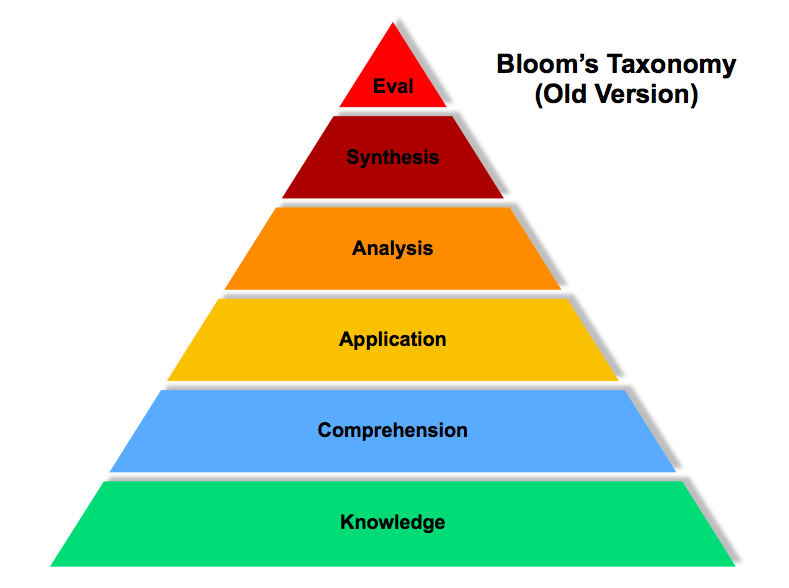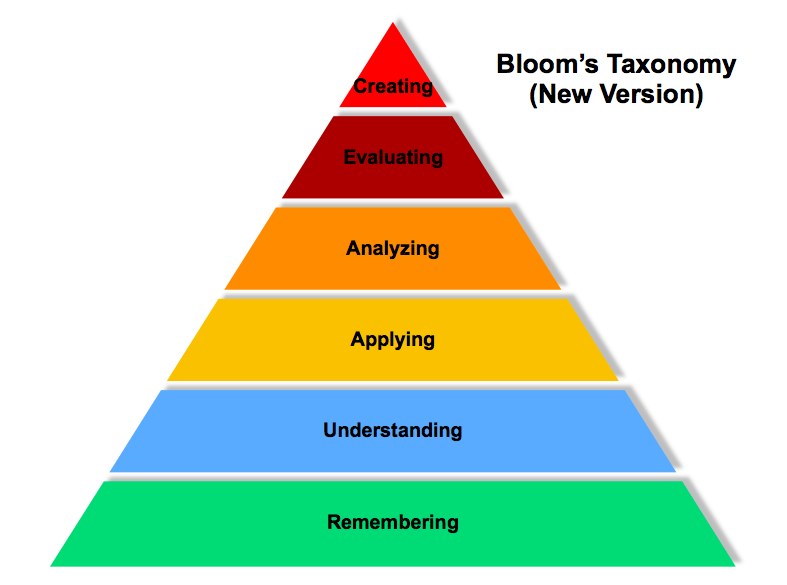引用:https://www.learning-theories.com/blooms-taxonomy-bloom.html
Bloom’s Taxonomy is a model that is a hierarchy — a way to classify thinking according to six cognitive levels of complexity.
CONTRIBUTORS
- Benjamin S. Bloom (1913-1999)
KEY CONCEPTS
Bloom’s model consists of six levels, with the three lower levels (knowledge, comprehension, and application) being more basic than the higher levels (analysis, synthesis, and evaluation)[1]. Some think of the levels as a stairway, in which learners are encouraged to achieve a higher level of thinking. If a student has mastered a higher level, then he or she is considered to have mastered the levels below.
Bloom’s model has been updated to account for 21st century needs[2].

NEW MODEL:

我的看法
Bloom的这篇关于认知领域的6个分类:==识记==,==理解==,==应用==, ==分析==, ==评价==, ==创造==。对学习者(也就是我)有很好的帮助。在学习的过程中,应当始终明确我学习的东西的它属于那个层次,并且我应该去要达到那个层次。刻意保持这样的意识有助于主次分明,突出学习的重点和难点,提交学习的效率。
REFERENCES
[1]: Bloom, B. S. (1956). Taxonomy of educational objectives: The classification of educational goals.
[2]: Anderson, L. W., Krathwohl, D. R., & Bloom, B. S. (2001). A taxonomy for learning, teaching, and assessing: A revision of Bloom’s taxonomy of educational objectives. Allyn & Bacon.